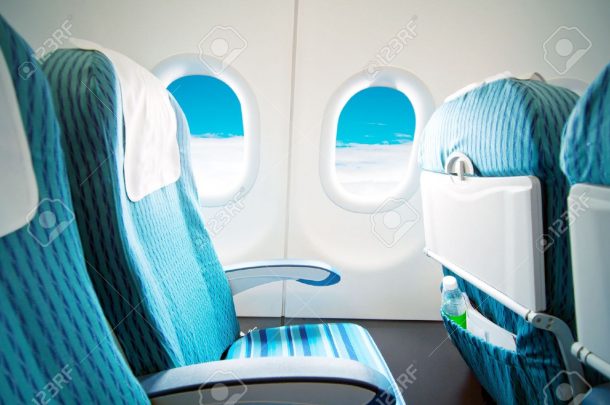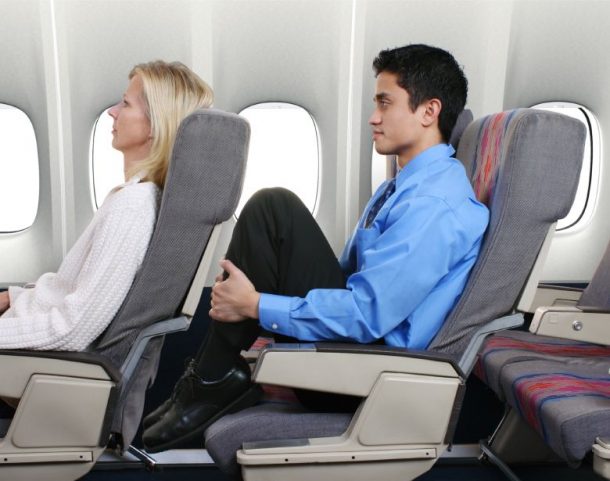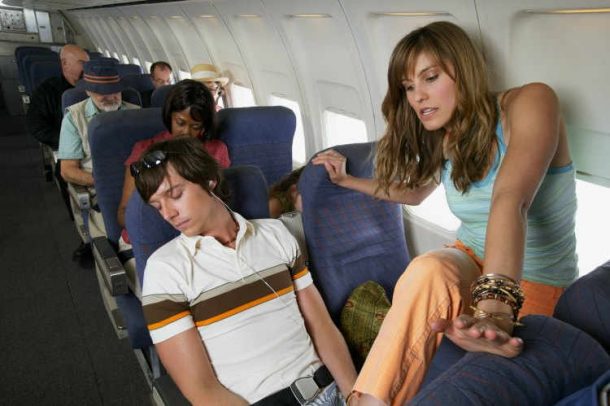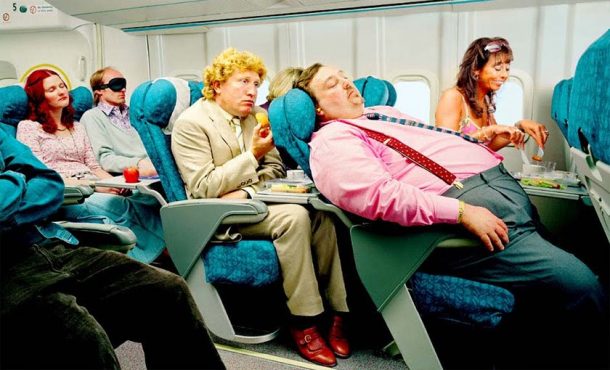Having to repose forward or bend backwards to see through the aeroplane window always makes one wonder, why in the world couldn’t the designers align the rows of seats with the windows? Was that harder than creating a freaking 900,000 pounds of metal through the skies? Well, you should probably go easy on the designers, as there are many other reasons for this ‘mistake’.
- Planes are designed once, but decorated several times:
An aeroplane is designed by manufacturers with a fixed row positioning, and most likely with each window aligned with the seats. But the final seat placement and decoration are in the hands of the airlines who purchase the plane. Thus you see different standards being followed on different planes.


Pic Credits: macleans -
Pitch of the frames is unrelated to the pitch of the seats:
The pitch is the measurement from one seat to the exact same point on the seat in front or behind it. The placement of the windows is required to cut through as few frames as possible. So the window alignment is entirely dependent on frame spacing, whereas seats can be moved inside the plane without having any effects on the dynamics of the structure. Windows are fixed, seats are not!

Pic Credits: yimg -
Preferred seating arrangements:
Every airliner company has to decide between the recommended seating arrangement and their self-designed one. For example, Boeing 777 is recommended to have a layout of 3+3+3 with a 32 inch (81.2 cm) pitch for their economy class. This means that a passenger density of at least 67% is required before passengers are started to be seated along each other. But companies usually employ an arrangement of 2+5+2, which means only a passenger load of 55% is required before people have to start sitting next to each other.

Pic Credits: worldnow -
Money is the anthem:
Seats are usually movable and installed on rails. So the airline companies usually change their position over time, mainly in a bid to cram more and more passengers into the plane to get some extra dough. They steal your leg room and in return squeeze in another row of seats, thus increasing the capacity of a flight and their profit at the expense of your comfort. This situation is not helped by the fact that there is no set rule on how many passengers and seats that can be squeezed into commercial aircraft. Thus, to make their flights more economical and market competitive, the airliners decrease both the pitch and the width between the seats to squeeze in as many people as possible.
Pic Credits: twototravelandtango
Do you have any other reasons on why the airline windows are not aligned with the rows of seats?
Let us know in the comments’ section below!







There are rules regarding how many seats/passengers can be accommodated inside a plane. Firstly, there must be a maximum ratio of passengers per emergency exit. Then, at the time of certification, new airplanes must undergo an evacuation test:
1) the plane is fitted with as many seats as the manufacturer wants to certify
2) an airline crew and volunteers fill the plane, which is placed inside a hangar.
3) once everybody is seated and all doors closed, the hangar lights go out.
4) half of the plane’s doors (emergency and those used for boarding) are disabled (passengers and cabin crew cannot know which ones will work).
5) Evacuation begins when the plane cabin lights go out (only the cabin emergency lightning remains on).
6) passengers and crew have 90 seconds to evacuate.
The test is either a pass (every soul on board got out within 90 seconds) or a fail (at least one person was not out and on the ground within 90 secs).
The A380 passed this test with 853 passengers and 20 crew members (they only needed 78 seconds).
If a new derivative variant of the plane goes into production, it is possible to extrapolate (within certain limits) the maximum capacity based on the test results. This does not mean “longer variant=more seats”, though. The B737-900 is longer than the B737-800. However, the 737-900 was certified to the same number of passengers as the 737-800 because they had the same number of emergency exits. Boeing had to put an extra door to bring the capacity of the 737-900 up.
Airplanes are created from a number of sections where every section has a window. So the seating in the plane is disregarded during design. As seats are freely movable on the guiderails, then every airline makes the spacing whatever they want. They may even align the seats to the windows, if they so wish.